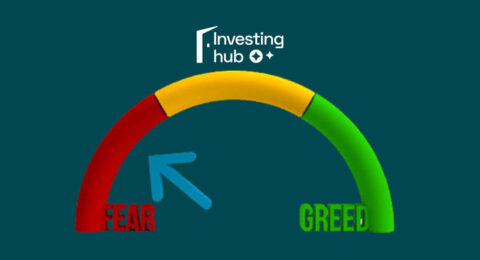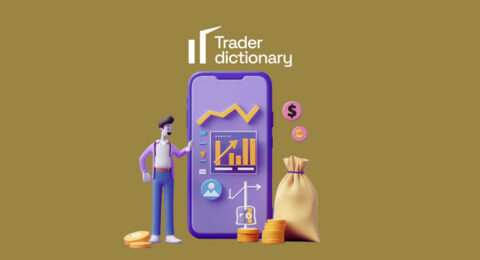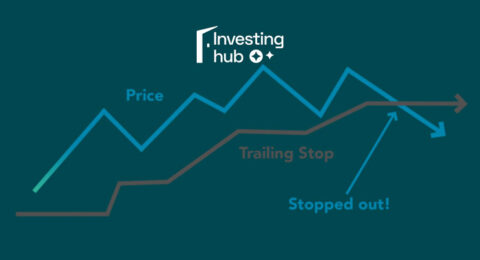In the world of investing and trading, there are many concepts and strategies that newcomers often find vague and hard to understand. One of the most important concepts that every trader must grasp is Price Action. This article will be a comprehensive and easy-to-understand source of information to help you understand what Price Action is, why it is important, and how you can use it to improve your trading skills. Join us in exploring and learning step-by-step, from basic to advanced, to become a more savvy investor!
What is Price Action?
Trading with the Price Action method is an investment approach in the financial market, based on analyzing the fundamental movements of prices over time. This method is used by many retail traders, as well as institutional traders and speculative fund managers, to predict future price movements of a security or financial market.
Simply put, Price Action is how the price changes, i.e., the ‘action’ of the price. It is most observable in highly liquid and volatile markets, but in reality, anything traded in a free market creates Price Action.
Trading with the Price Action method does not focus on the fundamental factors affecting market movements, but instead focuses primarily on the market’s price history, i.e., the movement of prices over a period of time. Therefore, Price Action is a form of technical analysis, but to distinguish it from most other forms of technical analysis, the main focus is on the relationship between the current market price and past or recent prices, rather than the ‘secondary’ values derived from that price history.
In other words, trading with the Price Action method is a ‘pure’ form of technical analysis as it does not include price indicators. A Price Action trader is only interested in the direct data that the market generates about itself; that is, the movement of prices over time.
Price Action analysis allows traders to understand the price movements of the market and provides them with explanations to build a mental script describing the current market structure. Experienced Price Action traders often believe that their special understanding and ‘intuition’ about the market is the main reason for their trading success. A Price Action trader uses the market’s price history, often focusing on recent price fluctuations in the last 3 to 6 months, with less attention to more distant price history. This price history includes peaks and troughs in the market, as well as support and resistance levels.
Traders can use a market’s Price Action to try to describe the human thought process behind the market’s movements. Everyone participating in the market leaves ‘clues’ of Price Action on the price chart when they trade in their market, which can then be analyzed and used to try to predict the next market movement.
What Does Price Action Tell You?
What Does Price Action Tell You? This is a question I, as an expert on connextfx.com, often receive. Let me analyze this more deeply.
First, Price Action tells you about the overall trend of the market. When you observe the price chart, you will see continuous peaks and troughs. These points help you determine whether the market is trending up or down. This is extremely important information for traders, especially in setting long-term trading strategies.
Next, Price Action provides deep insight into market psychology. For example, a series of decreasing peaks indicates the hesitant psychology of investors, who are unsure about the next price increase. Conversely, increasingly higher troughs show growing optimism in the market.
Additionally, Price Action also reveals support and resistance levels. These are the price levels where the price usually stops or reverses. Identifying these levels helps investors determine effective buying and selling points.
Finally, Price Action helps you “read” price patterns. Patterns like “head and shoulders,” “triangles,” or “flags” are not just images on the chart. They actually reflect market movement and decision-making. Understanding and effectively using these patterns can increase your chances of successful trading.
Thus, Price Action is not just numbers on a chart. It’s the market’s language, and learning how to “listen” to it is key to becoming a skilled trader.
Strengths and Weaknesses of Price Action
Strengths of Price Action
One of the biggest strengths of Price Action is its intuitiveness. When you look at a Price Action chart, you’re not just seeing numbers or trend lines; you’re seeing the market’s story. Candlestick patterns, for example, like Harami, Engulfing, or Three White Soldiers, are not just images. They are manifestations of investor psychology, struggles between bulls and bears, optimism and pessimism.
Additionally, Price Action provides us with flexibility. Unlike complex technical indicators, Price Action allows you to customize how you view and analyze the market based on your personal perspective. This helps each trader create a unique analysis style, suitable for their trading style and risk tolerance.
Finally, the great thing about Price Action is that it is not market-dependent. Whether you trade stocks, forex, or cryptocurrencies, Price Action can still be applied. This makes it a versatile and powerful tool for all traders.
So, Price Action is not just numbers and lines on a chart. It’s how the market talks to us, and learning how to understand it opens up a new world of opportunities and deep insights into trading.
Weaknesses of Price Action
The weakness of Price Action, as I have seen in many years of working on connextfx.com, is the large dependence on the analytical skills and experience of the trader. Unlike automatic technical indicators, Price Action requires you to be perceptive and deeply understand the market to accurately interpret price movements.
Another weakness is that Price Action does not provide comprehensive information about the causes of price movements. While it clearly displays price movement, it lacks fundamental factors such as economic news, company financial reports, or political events that may affect the price. This sometimes makes traders dependent on external information sources for a fuller picture.
Additionally, Price Action can also produce false signals in some cases. For example, a price pattern may look like a strong buy or sell signal, but it does not accurately reflect the actual situation of the market. This is especially true in highly volatile markets, where prices can change quickly and unpredictably.
Finally, learning and mastering Price Action can take quite a bit of time and effort, especially for beginners. This is not a skill you can learn quickly; it requires patience and continuous practice to master.
Who Can Use Price Action Trading
Price Action is not a trading method reserved for a specific group of investors; it is suitable for almost everyone, from professional traders to beginners.
Beginners can find great value in using Price Action. Because it does not require deep knowledge of complex technical tools, Price Action becomes an excellent way for them to start learning how to read and understand price charts. With a bit of patience and practice, even beginners can start to recognize trends and price patterns.
For professional traders, Price Action provides a flexible and deep analytical tool, helping them more accurately adjust their trading strategies. They can use Price Action to determine optimal buying and selling points while identifying potential trading opportunities that other methods may miss.
Both short-term and long-term traders can take advantage of Price Action. Short-term traders can use it to capture quick trading opportunities, while long-term traders can use it to analyze overall trends and identify important support and resistance levels.
So, no matter who you are or what your level of experience is, Price Action can be a valuable tool in your trading arsenal. Remember, like any trading method, learning and mastering Price Action also requires time and practice.
Some Price Action Tactics
Trading with the Breakout Strategy
Breakout occurs when the price breaks through an important support or resistance level that previously held the price within a certain range. This often comes with an increase in trading volume, indicating strong market participation. When a Breakout occurs, it signals a major change in supply and demand and usually leads to a new trend.
With this strategy, I often look for certain price patterns, such as triangles, flags, or similar forms. When the price breaks these patterns, it usually creates a strong trading opportunity. However, it’s important to check for confirmation from other factors, such as trading volume, to avoid false signals.
A point to note is risk management in Breakout trading. I usually place stop-loss orders close to the support or resistance level that has been broken to limit risk. At the same time, identifying profit targets is also important, based on the size of the price pattern and the next support/resistance levels.
Overall, the Breakout strategy in Price Action is a powerful method but also requires sharpness and careful risk management skills. When executed correctly, it can open up significant opportunities in the market.
Trading with the Retest (Reversal) Strategy
Trading with the Retest (Reversal) in Price Action, is a strategy that I have applied many times in my trading career. Retest is when the price returns to a support or resistance level that has been broken, often to test the strength of this new price level. This is a great opportunity to confirm the new trend and enter the market with lower risk.
When executing Retest trading, it’s important to accurately identify support or resistance levels. I usually look for price levels that have previously had strong interactions with the price. Then, I closely monitor to see if the price returns to this level after the breakout. If it does, I wait for signs of a price reversal, such as a reversal candlestick pattern, before making a trading decision.
An important factor in Retest trading is risk management. I usually place stop-loss orders just below the support level or above the resistance level, depending on the direction of the market. This helps me minimize risk in case the market doesn’t move as predicted.
Finally, trading with Retest requires patience and discipline. Sometimes, the price does not return to the broken level, and waiting can take time. However, when done correctly, it can bring significant profits with low risk.
Pullback Trading Strategy
The Pullback Trading Strategy in Price Action, a truly fascinating topic that I have applied many times. A pullback occurs when the price temporarily reverses direction opposite to the main trend, before continuing in the original direction. This is a golden opportunity to enter at a low cost in a strong trend.
When applying this strategy, I focus on identifying the main trend of the market. A strong uptrend will have pullbacks in price decreases, and conversely, in a downtrend, pullbacks will be short-term price increases. The goal is to find buying or selling points during the price “breathes,” before it continues the main trend.
One of the techniques I often use is looking at support and resistance levels. In an uptrend, the support level can be a good buying point when the price performs a pullback. Similarly, in a downtrend, the resistance level can provide selling opportunities.
However, risk management cannot be ignored. I always place stop-loss orders to protect my position in case the market does not move as expected. Also, understanding market psychology and expecting a return to the main trend is key to success with the Pullback strategy.
Difference Between Price Action, Technical Analysis, and Indicators
Price Action:
- Focuses on the price chart: Price Action emphasizes reading and directly analyzing the price chart without relying on technical indicators.
- Analyzes price action: It evaluates the movement of past prices to predict future trends.
- Simple and intuitive: Price Action helps view the market simply and understandably through price patterns and trends.
Technical Analysis (TA) and Indicators:
- Uses many tools: Includes both Price Action and technical indicators like RSI, MACD.
- Based on historical price and trading volume: Analyzes trends based on historical data, including price and volume.
- More mathematical and complex: Usually more complex than Price Action as it includes various indicators and mathematical models.
- Mathematical analysis tools: Indicators are mathematical tools built based on price and/or trading volume.
- Provides buy/sell signals: They are often used to generate buy or sell signals based on certain conditions.
- Can lead to ‘over-analysis’: Over-reliance on indicators can lead to overlooking important information from Price Action.
In conclusion, while Price Action focuses on directly observing the price chart and making trading decisions based on fundamental analysis, technical analysis and indicators include the use of more complex mathematical tools and methods. Each method has its own strengths and weaknesses, and their use depends on the style and experience of each trader.
Tips When Trading with Price Action
When trading with Price Action, there are some important considerations that I would like to share from my experience at connextfx.com. Here are things to keep in mind:
- Understand the Price Patterns: Price Action primarily relies on identifying price patterns on the chart. This requires a deep understanding of how patterns such as Japanese candles, peaks and troughs work.
- Carefully Observe the Chart: Take the time to observe and analyze the price chart, especially the support and resistance levels, as well as reversal signals.
- Patience in Waiting for Opportunities: In Price Action trading, clear opportunities do not always present themselves. Patience in waiting until a clear opportunity arises is key.
- Strictly Manage Risk: Never forget to place stop-loss orders. Risk management is an important factor in protecting capital and maintaining profits.
- Do Not Rely Entirely on Price Action: Although Price Action can be very powerful, it is not the only tool. Combining it with fundamental analysis and other technical indicators can enhance trading effectiveness.
- Learn from Experience: Each trade brings lessons. Recording and analyzing after each trade helps you better understand your strategies and trading style.
Conclusion
Through this article, we hope you have gained a clearer understanding of how Price Action works, as well as how to apply it to your trading strategy. Remember, whether you are a beginner or have experience, continuous learning and practice are always the key to success in the investment world. We wish you luck and success on your trading journey with Price Action!









